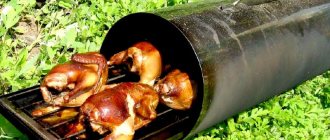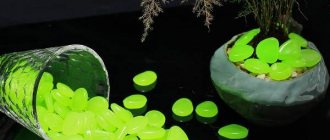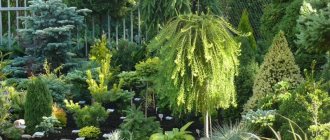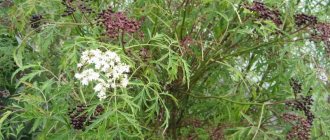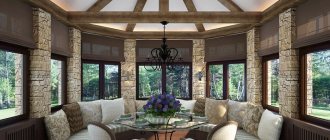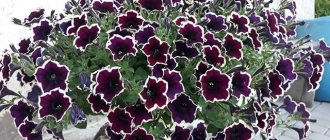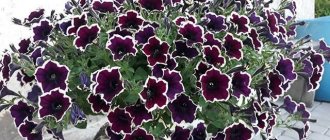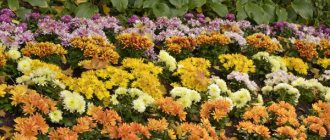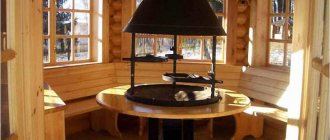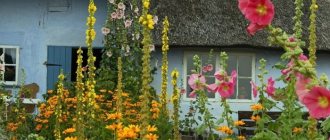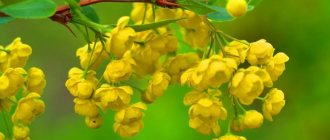One has only to change the cladding and the house itself will change beyond recognition. However, before delving into the design subtleties of facade design, it is important to understand the finishing materials, their properties, advantages and disadvantages. Do-it-yourself finishing of the facade of a house can be done using:
- siding,
- facade plaster,
- stone,
- brickwork,
- tiles
Each type of cladding has its own characteristics and requirements for surface preparation. This article will focus on the quality of the wall and the types of cladding materials.
Purpose of the facade
The facade serves not only for aesthetic perception, but also performs useful functions.
Aesthetics
The facade of the house should please the eyes of passers-by and please the owner, since the overall perception and mood depend on the design.
Combined finishing with stone and plaster in a modern home design Source yandex.net
There are many types of exterior design of buildings. Designers advise making the façade in some style and trying to ensure that it fits into the surrounding landscape.
Cottages decorated with timber and wood-like siding look in the forest. A house on the shore of a lake or river looks spectacular if the architectural appearance places emphasis on panoramic glazing. The high-tech style, combining decoration with metal, glass, and plastic, is appropriate in big cities. The brick facade will fit into both an urban environment and a country setting.
Functional
The external cladding of the house performs the following functions:
- protects the building frame from premature wear;
- prevents the influence of aggressive environmental agents on the bearing surface;
- reduces the impact of climatic factors;
- serves as a barrier against fire (when using fire-resistant materials);
- provides sound insulation and thermal insulation.
Selection of materials
Built houses need external finishing. This applies to buildings built using the frame method, as well as houses made of blocks and bricks.
Facade decorated with brick and plaster Source roomester.ru
Wooden houses do not need finishing, since wood is a self-sufficient material with aesthetic and practical properties.
The modern building materials market offers a wide variety of finishing materials, which open up wide opportunities for the decorative design of buildings. Popular façade finishing options:
- brick cladding;
- decorative plaster;
- stone cladding;
- siding;
- tile;
- thermal panels;
- painting.
Facade cladding with brick is a classic finishing option that never goes out of style. They resort to brick in cases where there is no question of saving money, but the task is how to make the facade of a house for all time. Brick finishing is planned at the design stage to leave gaps in the foundation for the brick. The foundation is strengthened so that it can withstand the additional load.
An old-style mansion, lined with brick Source yandex.net
A ventilated gap is provided between the walls, which is necessary for walls with high vapor permeability - made of wood, aerated concrete, wood concrete, foam concrete. Since brick does not have good heat-insulating properties, the façade will need to be insulated with a basalt slab or mineral wool.
Finishing brick has the following advantages:
- strength;
- weather resistance;
- frost resistance;
- fire resistance;
- durability – lasts from 50 to 100 years;
- immunity to ultraviolet rays;
- diverse color range.
Beautiful facades are achieved by laying bricks of different colors. Brick cladding is considered one of the most expensive, ranking second in cost after stone finishing.
Photo
Finishing the base, chimneys and individual areas with stone tiles
Beige siding
Clinker and mineral plaster
Imitation half-timbering and clinker tiles
Finishing with different types of stone
Stone finishing in a variety of combinations
Ceramic tile
Facade facing with stone
Planken-clad facade of a two-story house
Plaster bark beetle
Artistic approach
Decorative finishing with tiles and planks
Stone finishing of the balcony area
Imitation of half-timbered polyurethane on clinker tiles
Sandstone finishing
Decorative plaster of the facade
Larch planken
Tiling the basement and corners of the building
Decorative plaster
One of the cheapest ways to finish a facade is plastering.
A successful combination of colors when decorating a facade with decorative plaster Source akgulmimarlik.com
See also: Catalog of companies that specialize in finishing materials and related work
Advantages of plaster:
- low price;
- beautiful view;
- abundance of colors;
- resistance to precipitation;
- vapor permeability - the wall “breathes”.
The following types of plaster mixtures are available for sale, differing in composition:
- acrylic – have a high degree of adhesion, resistance to temperature changes, and elasticity. The mixture dries quickly, which should be taken into account when working, and applied from wall to wall in planes. Bright colors may fade when exposed to sunlight. The finish lasts up to 20 years;
- mineral - characterized by low price and short service life. It is not recommended to use mineral plaster on the facades of houses located on highways, near railway tracks, and newly constructed buildings, as the surface may crack under the influence of vibrations. The average service life of mineral plaster is 10 years;
Plaster with marble chips creates an exclusive facade Source tildacdn.com
- silicone is a more expensive type of finishing that has appeared on the construction market relatively recently. They create a smooth surface that does not leave marks on clothing upon contact. The plastic mass, with the addition of quartz sand, creates a cladding like natural stone. The peculiarity of plaster is self-cleaning - when it rains, dirt is washed off from the surface. Silicone facade decoration will last up to 25 years;
- silicate - made on the basis of liquid glass, they give the cladding moisture resistance and strength. They require skill when applying a quick-drying composition to the wall surface. Silicate mixtures are expensive, but the high price is justified by their long service life - the facade will retain its appearance for up to 25 years.
Depending on the method of application, plaster can be:
- bark beetle;
- mosaic;
- stone.
The textured surface is created with special rollers, adding small granules to the plaster composition. You can use improvised means.
Mosaic facade Source artsten.ru
Plaster hides the imperfections of the wall - cracks, depressions, bulges formed during operation. The plaster mixture is applied in several layers. To prevent the finishing from falling off, the wall is pre-reinforced.
Tools for creating a home layout
After choosing the number of floors of the house, you can move on to planning the premises inside. The location of premises, their sequence and area are not regulated by standards, so any combinations and options can be used. Recommendations from design engineers will help you avoid the consequences of inconvenient solutions.
Based on the internal layout of the premises, you can return to the design of the facade: the number of windows, doors, stairs.
There are regulatory requirements for stairs and doors. Stairs must comply with the requirements of SNiP 2.08.01-89, and the location and method of opening doors must comply with fire safety requirements.
The location of windows must meet the standards for natural illumination of premises, which is regulated by SNiP 23-05-95, GOST R 56926-2016.
Stone cladding
The facade, lined with stone, looks solid, lasts a long time, and is not susceptible to weather factors. Natural and artificial stone is used for cladding. The peculiarity of the material is that it can be used to renovate an old building and give the appearance of an old building to a new home. The high price is justified by the long service life - up to 50 years and more.
A natural stone
Natural stone has:
- high strength
- beautiful view;
- resistance to temperature changes;
- immunity to climatic and mechanical influences, aggressive environment.
The strongest types of stone are granite and basalt. Marble, dolomite, limestone, shell rock, sandstone, and slate are also used.
Granite cladding Source insales.ru
Heavy natural stone is not recommended for cladding old, dilapidated buildings, as the foundations may not be able to withstand the load.
Fake diamond
Cladding the façade with artificial stone is cheaper than with natural stone. The material, created using the latest technologies, is distinguished by its lightness, strength, frost resistance, resistance to ultraviolet rays, and a variety of colors and textures.
Facade stone is produced: clinker, concrete, polymer sand, ceramic, architectural. The material contains environmentally friendly components, which makes the cladding safe for humans.
Portfolio
Porcelain tile facade of the Tikhoretsky shopping center
Facade area – 855 m2
Work completion time: 60 calendar days
Ventilated facade of the school “Integration XXI Century”
Facade area – 700 m2
Work completion time: 50 calendar days
Siding
Siding is a popular modern material that allows you to quickly and easily decorate the facade of a house at low financial cost. Long narrow slats are used to decorate the facade, both during construction and remodeling of the building.
Finishing the facade with siding Source roomester.ru
Advantages of siding:
- ease of installation;
- low price;
- decorative effect due to the variety of species;
- light weight, which reduces the load on the foundation and walls;
- protection from aggressive and climatic factors;
- low thermal conductivity.
Siding differs in material of manufacture:
- vinyl – based on PVC, it stands out for its strict appearance, variety of shapes, variety of colors. Modifiers in the material make the siding reliable and resistant to weather conditions;
- wooden - made from pressed crushed wood with artificial components. It is characterized by aesthetics, durability, moisture resistance, and thermal insulation properties. Using lamellas, they create a façade that imitates wood. Disadvantage: fire hazard;
Wooden siding in the cladding of a house Source roomester.ru
- metal – steel lamellas with an outer polymer layer and a protective coating. It is characterized by strength, moisture resistance, corrosion resistance, fire resistance, moisture resistance, and resistance to temperature changes. Disadvantages - it heats up quickly in the sun, dents remain after impacts, and due to its large weight it puts a high load on the walls. They produce a limited palette of colors;
- cement - made of fiber cement. It is distinguished by a variety of colors, resistance to sunlight, temperature changes, and climatic influences. Provides warmth. Resistant to fungi.
Finishing with siding can hide uneven walls and communications. It is easy to do the cladding yourself, without the help of specialists. It is enough to read the instructions, arm yourself with tools, and quickly finish the facade with siding.
Non-standard design solutions
Many craftsmen design the facades of their houses in non-standard ways:
- Decorating the facade of the house with fresh flowers looks good. It is performed by attaching aluminum cassettes to the wall of the house. Pots with flowers are installed in these cassettes. Flowers give the house an extraordinary lively appearance.
- Cladding a house with plaster and then painting the walls of the house to match the color of your country's flag. This color of the house will look brighter and more obvious than if it were just one color.
- The real art lies in covering the walls of a house by laying out lids. The cap from a plastic bottle is stuffed with nails or screws to the base of the wall. This is easier to do for a wooden house; the difficulty lies in collecting such a huge number of caps. From multi-colored caps you can lay out drawings on the wall.
- A house lined with glass jars of the same size will look unusual. These jars are laid out according to the brick laying method.
You may probably be interested in information about facade wood paint for exterior use.
Having considered all aspects of the design of the facade of the house, you can decide on the choice of material for cladding your home. All types of decoration of the external walls of the house are good. Everyone has their own approach, because in the present time everything is decided not by desire, but, unfortunately, by financial security.
Tile
Tiles are widely used for cladding facades:
- ceramic - made of quartz, kaolin, sand, iron oxide, mica, processed at a high temperature of 100 degrees, has strength, the ability to withstand temperature changes, and moisture resistance. They produce glossy, matte tiles - with a rough surface, in a variety of colors and textures;
- concrete - made of sand, cement with the addition of plasticizers, the appearance and properties resemble natural stone. Even by touch it is difficult to determine that it is concrete;
- Porcelain stoneware is a durable material obtained by pressing and sintering, which determines its low-porosity structure. It looks like natural stone. It is characterized by moisture resistance, resistance to precipitation, weather conditions, aggressive environments, and frost resistance.
Cozy courtyard from scratch
Here, homeowners wanted to be able to relax in the courtyard while watching their children and communicating with neighbors. Their dream was fulfilled by widening the tiny porch and adding new steps leading down to a wide walkway with a long, curved bench. A low white fence began to separate the front yard from the sidewalk and make it cozy, like an outdoor room.
Thermal panels
Thermal panels are a universal polystyrene-based material that performs the function of finishing and insulation. The outer side of the thermal panel looks like brick or stone masonry.
Thermal panels in the exterior decoration of a building Source vosaduly.ru
The multilayer structure provides good heat and sound insulation. Dense and durable panels:
- withstand mechanical loads and temperature changes;
- resistant to mold and fungi;
- waterproof;
- are light in weight, which facilitates installation and reduces the load on the supporting structure;
- not exposed to ultraviolet rays;
- serve up to 50 years.
Of the minuses, we note:
- high price;
- the material requires a flat surface;
- the likelihood of damage to the facade by rodents.
There is a wide variety of thermal panels on sale with imitation of any natural material.
Completed facade design projects from TopFasad
We carry out a full range of facade decor work, and we already have more than 1,000 completed projects in our portfolio. Below are some of them, made in different architectural styles.
Exterior in the style of an English mansion from. More photos of the project at the link.
Facade cladding in the style of a Mediterranean villa from. More photos at the link.
Exterior decoration and landscape elements in the Baroque style with eclectic elements from. More photos of the project at the link.
Implementation of the “Moscow Chalet” project from . More photos at the link.
Castle style exterior from . More photos of the project at the link.
Decoration of a residential building and adjacent buildings in the Byzantine style with eclectic elements from. More photos at the link.
Our other projects, implemented in different styles, are presented in the “Completed Projects” section.
Painting
An inexpensive, accessible, but labor-intensive way to finish a facade is painting. Organic, mineral, acrylic paints are used for painting. The tool you will need is a roller or brush. The painting technology is simple; after practicing for a few minutes on the model, you can start painting the facade.
A villa painted in brick color in combination with white frames looks elegant Source housefasad.ru
There are many paints on sale in a rich color palette, which makes it possible to choose your preferred color to create a unique facade design. Painting is done on a clean primed wall surface. The only drawback of coloring is its fragility, but on the other hand, it is possible to frequently change the cladding so that the color does not get boring.
Plastered facade - a beautiful combination of colors Source kromvel.net
The procedure for insulating with mineral wool
Installation is carried out using the following technology:
Scheme and design of facade insulation with mineral wool
- make sheathing and place hangers;
- for rigidity during laying of the material, profiles are used;
- the plates are tightly inserted into the cells of the frame and fixed with dowels and glue;
- carefully process the joints;
- a layer of waterproofing is performed.
Then the surface is plastered or covered with clapboard.
Briefly about the main thing
The facade is an important component of the exterior of the house. The overall perception depends on the design - the cladding expresses the taste and material well-being of the owner. It also protects walls from external influences and weather influences. The abundance of finishing facade materials on sale makes it possible to cladding a house at low cost.
Knowing how to make a facade, you can select the necessary facing materials and create a unique cladding.
Ratings 0
Adding a summer veranda and warm colors
The contractor began the transformation of this house by removing construction debris and creating a beautiful veranda covered with wooden slats. The boulders were moved to the corner of the curb where they began to create a beautiful sculptural accent. The house itself was repainted a warm shade of beige, matching the green roof and new garage door.
Also read: 45 fabulous ideas for your garden
